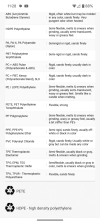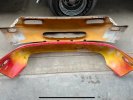Kenzie
New Member
i have quite a few plastic pieces to paint for my 94 Miata so I ordered some promotor and did a water float test with slivers of each piece. Initially only one of the eight slivers floated. However, after leaving the cup for a few hours I came back to find four of them floating now. Do I trust the initial results or results after sitting?
The really confusing part is that the rear bumper sample floats but the front bumper doesn’t. They’re both yellow/white (TPO?) factory pieces and the material looks the same.
Most of the other parts are cheaper, aftermarket parts that are very flexible and smooth, I’m assuming ABS and polyurethane.
The really confusing part is that the rear bumper sample floats but the front bumper doesn’t. They’re both yellow/white (TPO?) factory pieces and the material looks the same.
Most of the other parts are cheaper, aftermarket parts that are very flexible and smooth, I’m assuming ABS and polyurethane.


